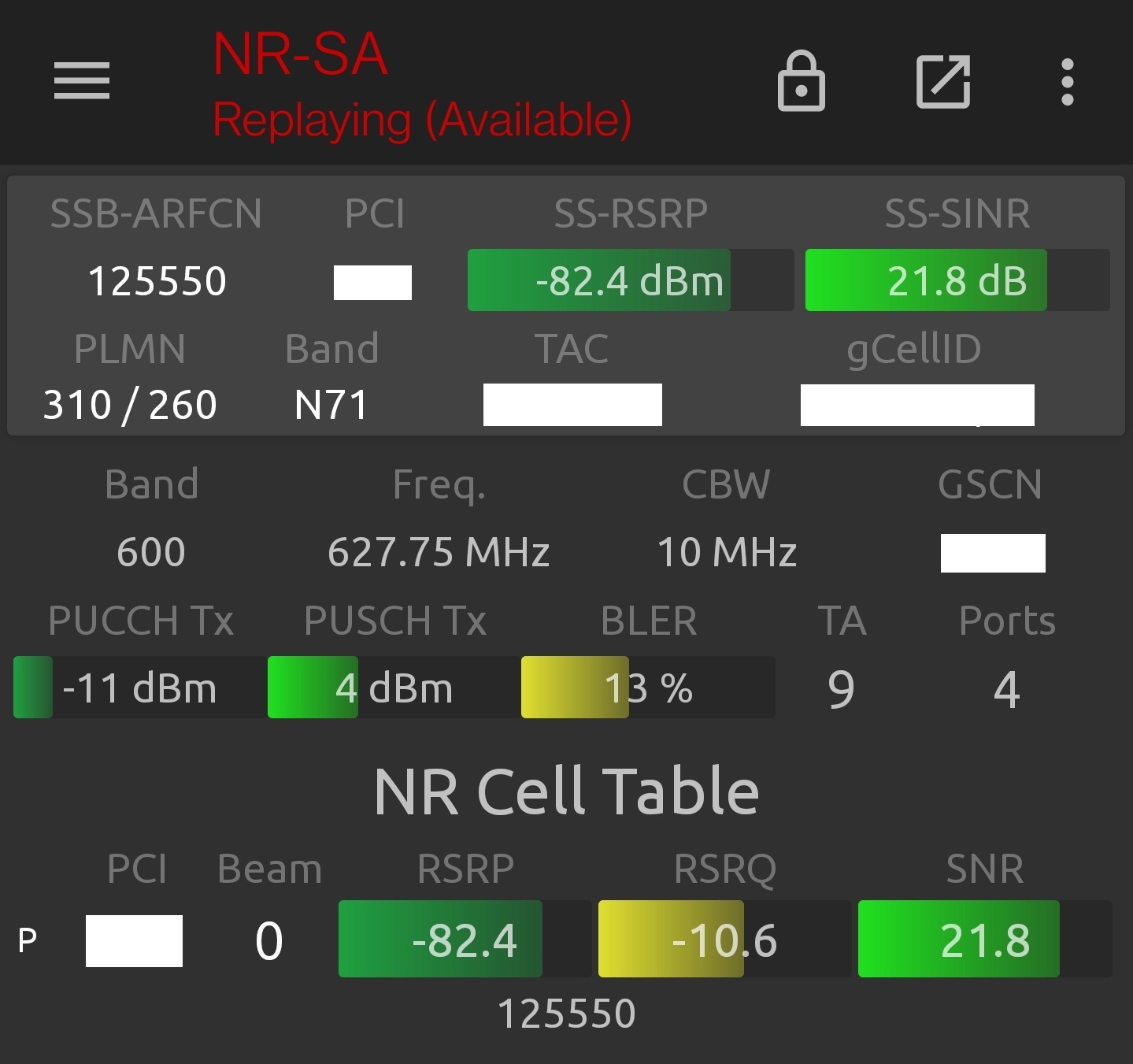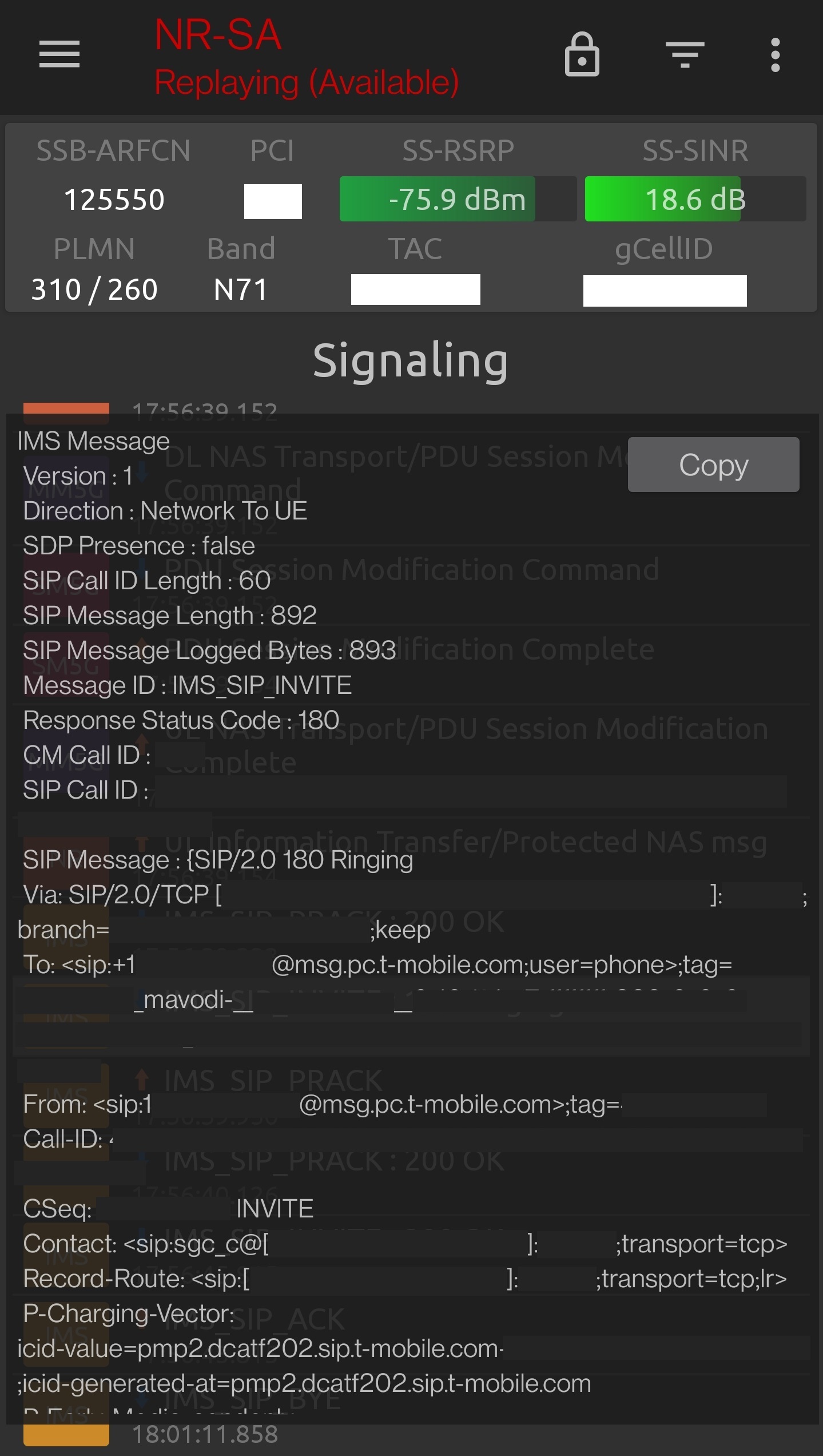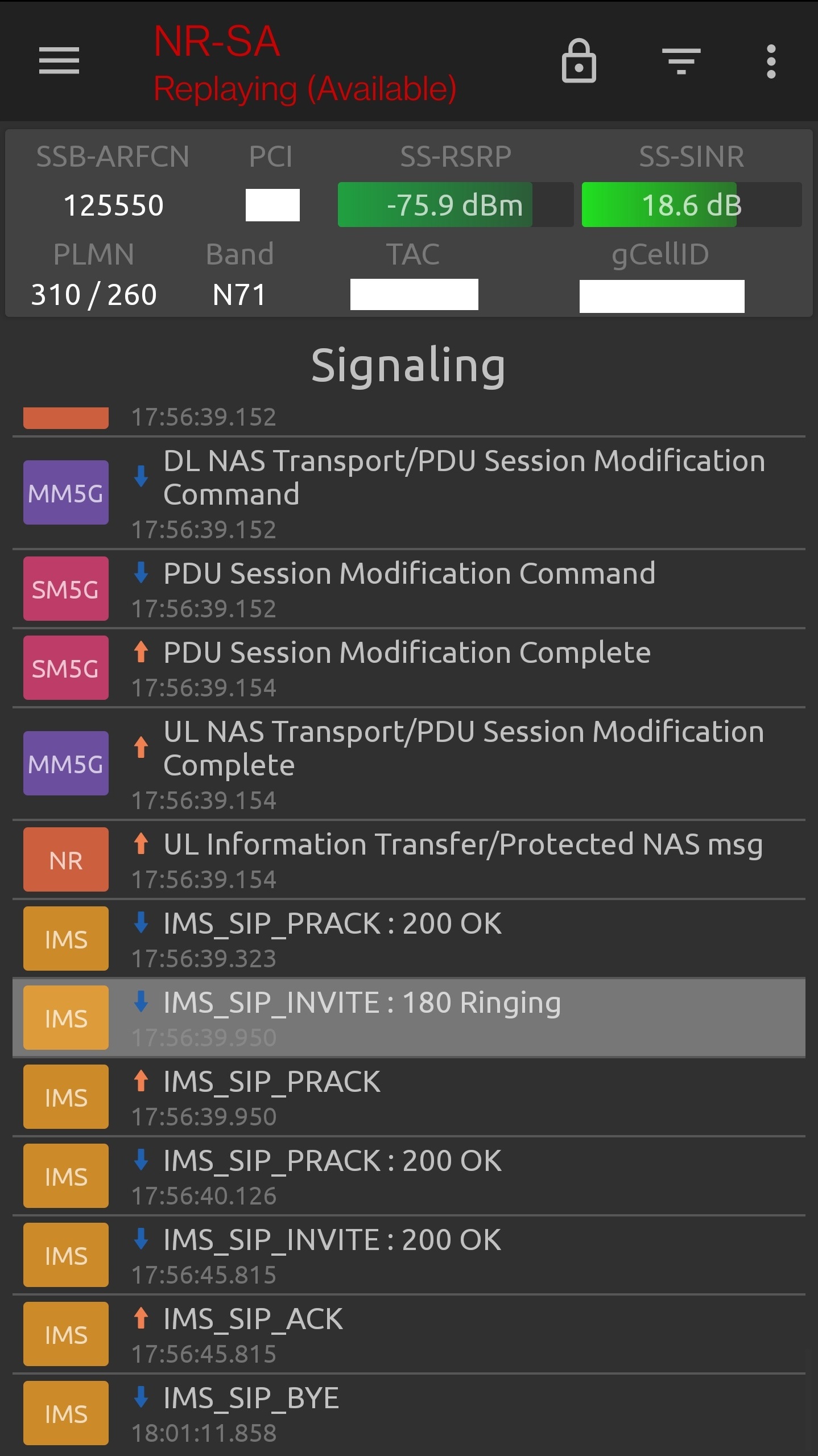VoNR on the commerical T-Mobile US network
To enable VoNR on your UE, see: Link
VoNR requires a 5GC with functional IMS services. In NR-NSA, the UE will always perform EPS fallback to LTE, however in NR-SA it can perform either EPS fallback to LTE to perform IMS services over the LTE link, or it can remain on the NR link to perform the IMS services.
The network decides which to offer based on UE support which is learned by the ueCapabilityInformation RRC packet in the signaling. If the UE supports VoNR, but the network prefers EPS fallback to LTE due to missing IMS services in the 5GC, it can force the UE to do so.
If the UE is forced to the NR-SA RAT only, and the network allows IMS services in the 5GC, the UE will use VoNR. If the UE is not forced to NR-SA RAT, and the network prefers to offer IMS via the 5GC, the UE will use VoNR. In the absence of UE support and support for IMS services in the 5GC, the device will fallback to LTE and perform the call via the EPC.
EPS fallback to LTE is a full RAT fallback/handoff back to LTE via the gNB and EPC, and forgoes any NR signaling.
If the signal is weak in NR, the network (gNB) will force the device to reselect to an LTE cell (eNB), and adds a delay before call can be initiated. VoNR routes SIP based IMS calls to the core via the gNB just as VoLTE routes SIP based IMS calls to the core via the eNB. Fundamentally there is no difference between VoLTE and VoNR except that one has it’s SIP signaling performed over the NR link and once has it’s SIP signaling performed over the LTE link.
Devices which have VoNR enabled will use the same IMS user agent as for VoLTE, and the same codecs. If your device has EVS enabled for VoLTE, you will benefit from EVS under VoNR.
Demonstration of VoNR on T-Mobile US’ commercial NR-SA n71 network. This VoNR call was performed on September 19th 2020.
Call summary

NR cell info

SIP Invite in NR IMS signaling

SIP Progress overview in NR IMS signaling
